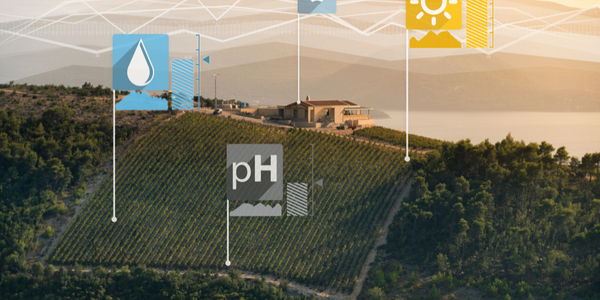Technology Category
- Cybersecurity & Privacy - Identity & Authentication Management
Applicable Industries
- Agriculture
- Equipment & Machinery
Use Cases
- Agriculture Disease & Pest Management
- Farm Monitoring & Precision Farming
Services
- Testing & Certification
About The Customer
The customer is a large multinational corporation with 11 divisions, including agricultural solutions. The company was facing challenges due to increasing climate volatility, particularly extreme weather events and persistent drought conditions. These challenges were raising new concerns and creating difficulties for strategic planning. The company was in search of better tools and a partnership that would jointly inform strategic decision-making. The company was also looking to increase the resilience of the supply of seeds and crops for buyers while improving the efficiency of producing new crop varieties at scale. They were also keen on evaluating how the climate is expected to change over the next 10-20 years for two chosen crop locations and identifying alternative expansion sites.
The Challenge
A large multinational corporation with 11 divisions, including agricultural solutions, was grappling with the increasing climate volatility, particularly extreme weather events and persistent drought conditions. These were raising new concerns and creating challenges for strategic planning. The company was seeking better tools for a more uncertain world and a partnership that would jointly inform strategic decision-making. The first challenge was to increase the resilience of the supply of seeds and crops for buyers while improving the efficiency of producing new crop varieties at scale. The second challenge was to evaluate how the climate is expected to change over the next 10-20 years for two chosen crop locations, the India tomato seed and the Italy leek seed — and identifying alternative expansion sites. The third challenge was to identify “tipping points” for the company’s portfolio.
The Solution
ClimateAi was engaged to help the company overcome these challenges. For the first challenge, ClimateAi’s Climate Analogs Tool identified two optimal locations in India for one specific seed variety. This tool was able to accomplish in a few hours what the company had worked on for several years, at 10% of the cost. For the second challenge, ClimateAi conducted two pilots with the company to assess climate risk exposure in these locations for the two crops. They used this information to vet long-term investment strategies in the region. For leeks, they understood that this region of production was still expected to be suitable for 20 years even though risks like pest and frost were emerging, and decided to continue its investment in the region. In addition, they were able to leverage these insights to adjust production planning with more resilient seed varieties and better timing for planting, while supporting growers to deliver optimal quality. Additionally, ClimateAi’s Climate Analogs Tool identified potential alternatives for expansion for both the tomato seed and the leek. For the third challenge, ClimateAi’s Climate Lens- Assess tool was able to evaluate the company’s country-level exposure to future climate shifts. The platform can identify tipping points: when an uncommon event (with a 25% probability) becomes a common occurrence (with a 75% probability).
Operational Impact
Quantitative Benefit

Case Study missing?
Start adding your own!
Register with your work email and create a new case study profile for your business.
Related Case Studies.

Case Study
Smart Water Filtration Systems
Before working with Ayla Networks, Ozner was already using cloud connectivity to identify and solve water-filtration system malfunctions as well as to monitor filter cartridges for replacements.But, in June 2015, Ozner executives talked with Ayla about how the company might further improve its water systems with IoT technology. They liked what they heard from Ayla, but the executives needed to be sure that Ayla’s Agile IoT Platform provided the security and reliability Ozner required.

Case Study
IoT enabled Fleet Management with MindSphere
In view of growing competition, Gämmerler had a strong need to remain competitive via process optimization, reliability and gentle handling of printed products, even at highest press speeds. In addition, a digitalization initiative also included developing a key differentiation via data-driven services offers.

Case Study
Intelligent Farming with ThingWorx Analytics
Z Farms was facing three challenges: costly irrigation systems with water as a limited resource, narrow optimal ranges of soil moisture for growth with difficult maintenance and farm operators could not simply turn on irrigation systems like a faucet.

Case Study
Predictive Maintenance for Industrial Chillers
For global leaders in the industrial chiller manufacturing, reliability of the entire production process is of the utmost importance. Chillers are refrigeration systems that produce ice water to provide cooling for a process or industrial application. One of those leaders sought a way to respond to asset performance issues, even before they occur. The intelligence to guarantee maximum reliability of cooling devices is embedded (pre-alarming). A pre-alarming phase means that the cooling device still works, but symptoms may appear, telling manufacturers that a failure is likely to occur in the near future. Chillers who are not internet connected at that moment, provide little insight in this pre-alarming phase.

Case Study
Premium Appliance Producer Innovates with Internet of Everything
Sub-Zero faced the largest product launch in the company’s history:It wanted to launch 60 new products as scheduled while simultaneously opening a new “greenfield” production facility, yet still adhering to stringent quality requirements and manage issues from new supply-chain partners. A the same time, it wanted to increase staff productivity time and collaboration while reducing travel and costs.

Case Study
Integration of PLC with IoT for Bosch Rexroth
The application arises from the need to monitor and anticipate the problems of one or more machines managed by a PLC. These problems, often resulting from the accumulation over time of small discrepancies, require, when they occur, ex post technical operations maintenance.







